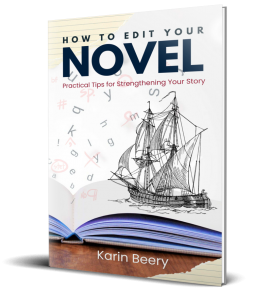
Every main character in every book has a backstory, but the readers don’t need to see or understand it all. There are times, however, when it’s necessary to include backstory in your manuscript to either fill in plot holes or show character development. One of the best ways to do that is by using dialogue, but only if you do it the right way.
Here’s a look at the wrong way to show backstory using dialogue:
“I think one of my friends stole my watch,” Ben said.
“Why would you say that?” his mom asked.
“Do you remember my twenty-first birthday party last week? It rained all day and we had to move the activities inside? The house wasn’t big enough, so people filled the living room, dining room, and hallway?”
“Of course.”
“Well, my bedroom is at the top of the stairs. Anyone could have gone up there without us noticing.”
Here’s the problem with that section: Ben’s mom already knows the details of the party, her son’s age, and the layout of the house. There’s no reason for him to give her that information. Doing so makes it look like this conversation is a set-up to give information to the readers (which it is). There are two ways to solve this problem.
#1: Make the dialogue more realistic:
“I think one of my friends stole my watch,” Ben said.
“Why would you say that?” his mom asked.
“Do you remember how crowded the house was during my birthday party? Anyone could have gone up to my bedroom without us noticing.”
#2: Use the Dumb Puppet:
“I think one of my friends stole my watch,” Ben said.
“Why would you say that?” his mom asked.
“Do you remember how crowded the house was during my birthday party? Anyone could have gone up to my bedroom without us noticing.”
“How could you not notice someone in your bedroom?” Brian asked.
“The party was supposed to be outside, but it rained all day,” his mom said. “We had to move the activities inside. The house wasn’t big enough, so people filled the living room, dining room, and hallway. Ben’s bedroom is upstairs. Anyone could have gone up without us noticing.”
Do you see the difference between options?In the first version, the dialogue is unnatural. Yes, it gives necessary information, but it also makes the characters seems awkward. The latter options create a smoother flowing story. If the details of the party aren’t important, cut them (example one) and keep the story moving. If they are important, include a character who doesn’t know what’s going on (in this case, Brian is the Dumb Puppet) so the other characters can explain it without sounding awkward.
Are you struggling to include backstory in a more natural way? Let me know, and let’s see how we can figure it out together.
AVAILABLE NOW–get your copy here!
 If you’re looking to strengthen your writing and self-editing skills, here’s what you can expect in How to Edit Your Novel:
If you’re looking to strengthen your writing and self-editing skills, here’s what you can expect in How to Edit Your Novel:Take your self-editing skills to the next level.
• Have you eliminated all the telling?
• Are the characters complex?
• Is every scene necessary?
Most authors will answer ‘yes!’ to these questions. But then editors and readers tell them the descriptions don’t engage them, the characters are stereotypical, and the story dragged.
How do you fix it?
Self-editing can only take you so far. But if you know the right questions to ask and you know how to interpret the answers, you’ll not only strengthen your self-editing skills, you’ll strengthen your writing.
HOW TO EDIT YOUR NOVEL doesn’t simply rehash the fiction-writing basics that create good stories-it provides examples, context, and questions that will help authors identify and strengthen their weaknesses the same way a professional editor tackles a manuscript. By combining mini writing lessons with practical self-editing tips, everything a writer needs to become a better self-editor is practically presented.
Whether you’re a new writer or an experienced author, HOW TO EDIT YOUR NOVEL can help you polish your story into a gem agents, publishers, and readers will want to keep reading.
